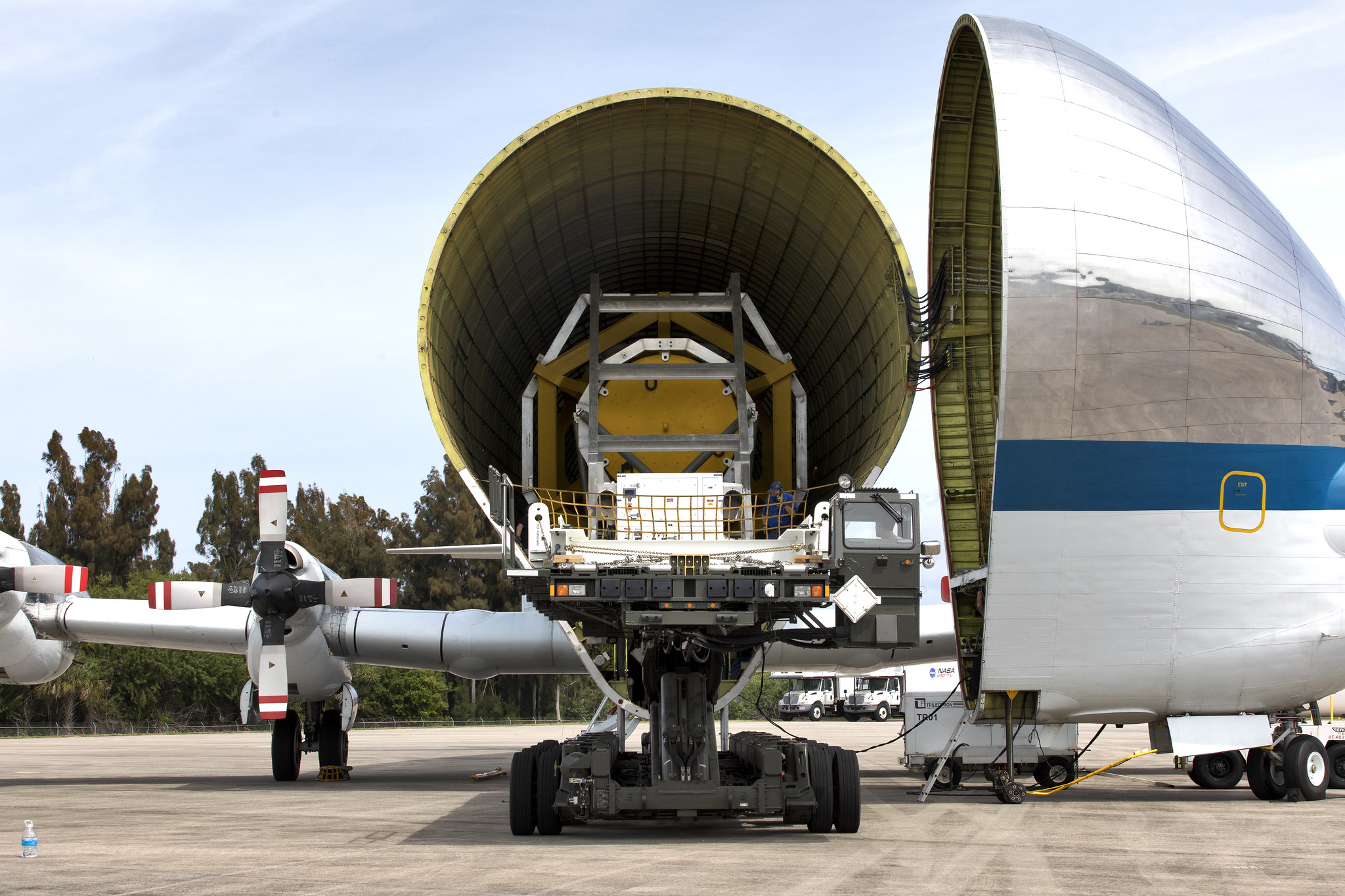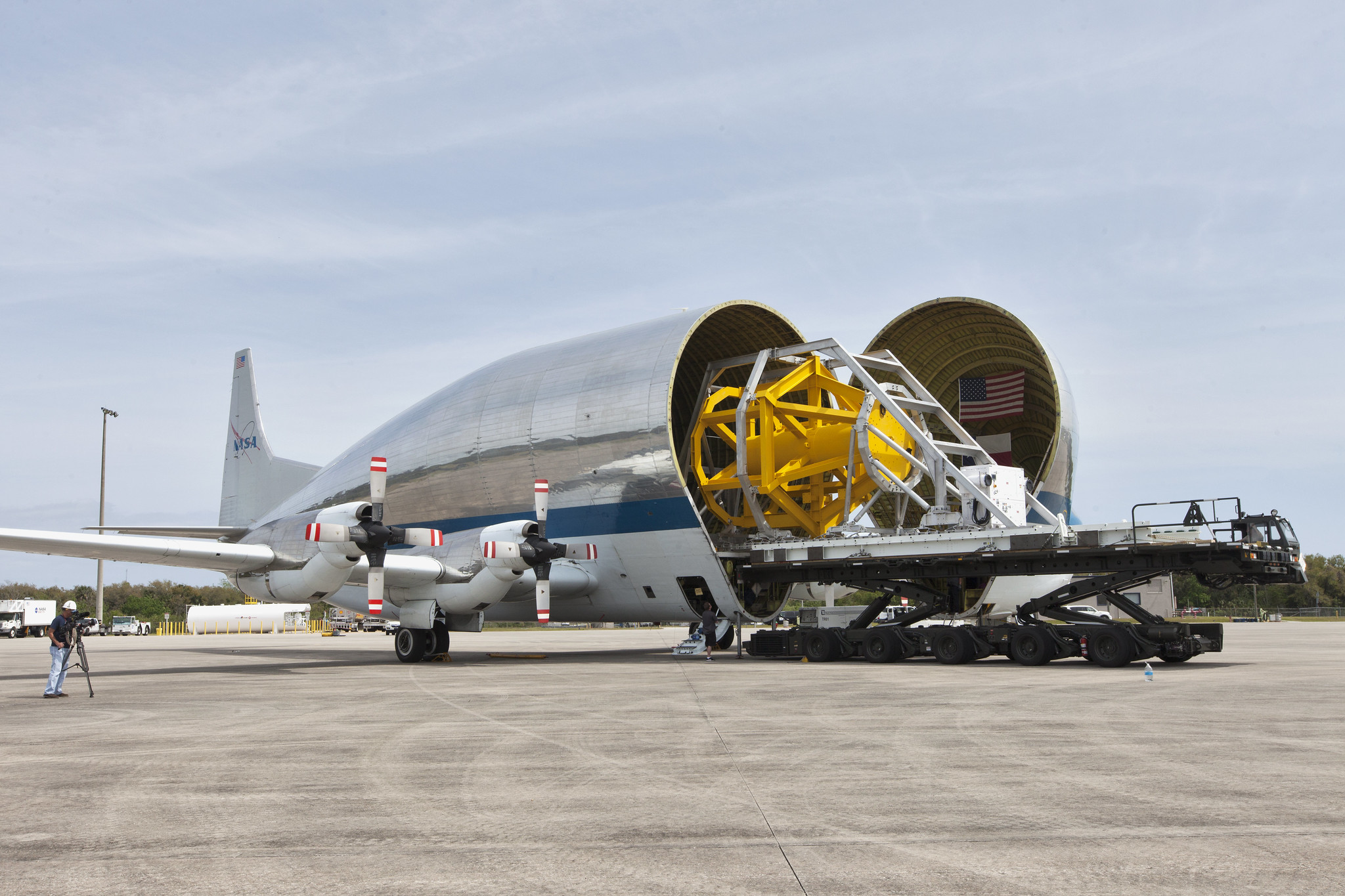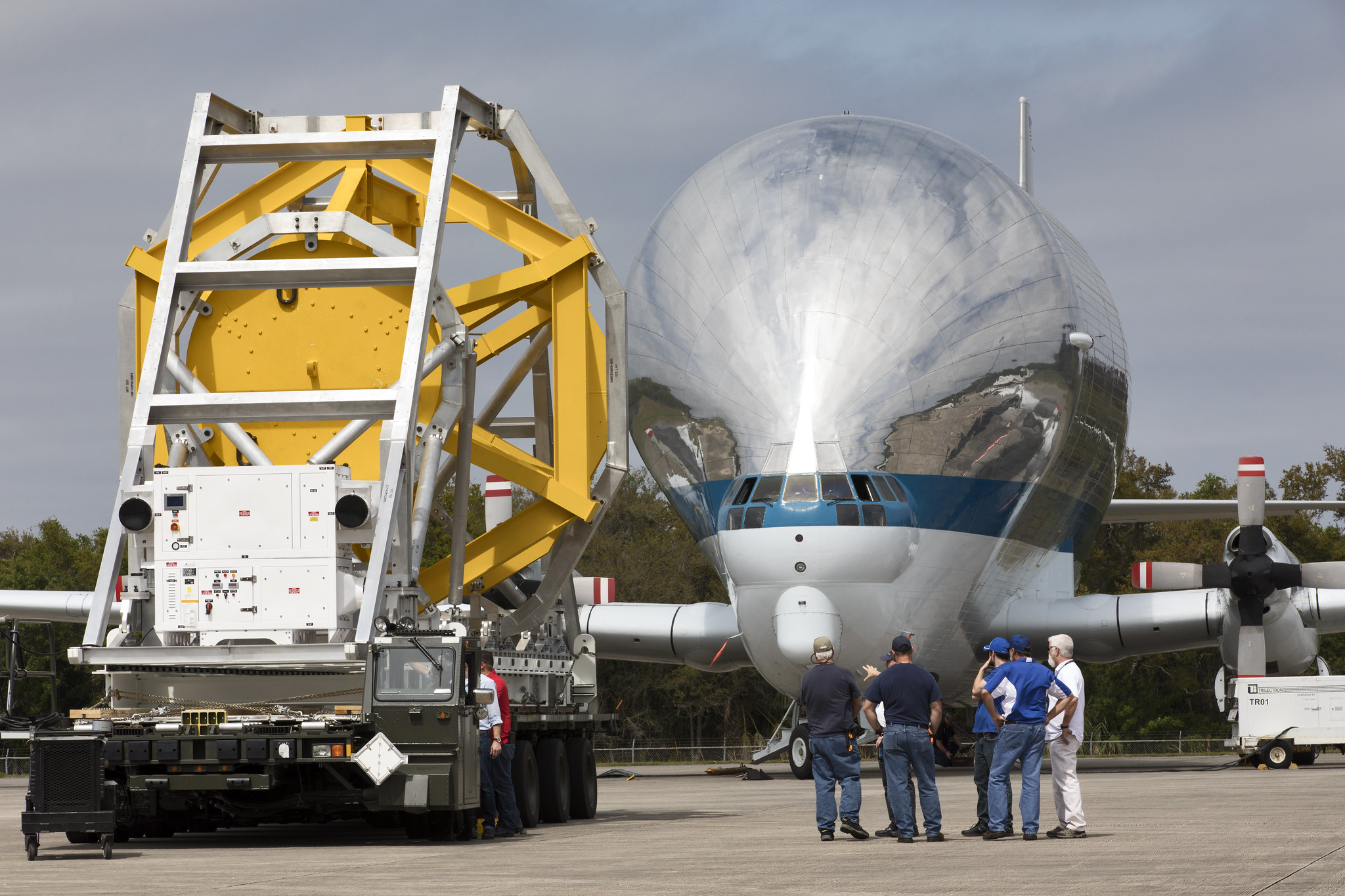
By Linda Herridge
NASA’s John F. Kennedy Space Center
NASA’s Orion crew and service modules are being prepared for Exploration Mission-1 (EM-1) inside the high bay of the Neil Armstrong Operations and Checkout Building at the agency’s Kennedy Space Center in Florida. But before they hitch a ride to deep space, they are being prepared for a different kind of flight.
Soon, the joined modules will be readied for a trip aboard NASA’s Super Guppy aircraft from Kennedy to the agency’s Glenn Research Center Plum Brook Station in Sandusky, Ohio, for thermal vacuum and electromagnetic interference and compatibility testing. In this unique facility, which houses the world’s largest space simulation chamber, Orion will be put through extensive testing to ensure it can survive and operate in the harsh environment of deep space.

To prepare the spacecraft for the trip to Plum Brook Station, NASA and Orion prime contractor Lockheed Martin, with support from the U.S. Air Force Air Mobility Command, conducted a fit check of the horizontal transporter fixture that will house them at the center’s Shuttle Landing Facility, operated by Space Florida. The horizontal transporter fixture will encase the spacecraft inside the Super Guppy to keep it still and sturdy for its flight to Plum Brook.
“Orion and the service module will be the heaviest payload ever transported in the Super Guppy,” said John Bakalyar, the Super Guppy program manager in aircraft operations at NASA’s Johnson Space Center in Houston. “We actually had to make some modifications to the aircraft to accommodate it, but this is exactly the kind of thing we like to use the Guppy for – it allows us to play a small role in getting Orion to space.”
Bakalyar said preparations for transportation in the Super Guppy actually began in late 2014. The horizontal transporter fixture was built specifically for carrying Orion aboard the Super Guppy. Modifications to the Super Guppy were completed to ensure that the flight frame would fit securely inside the aircraft.
During the fit check, the horizontal transporter fixture was secured on the Air Force’s aircraft loader and moved from the O&C to the landing facility. The aircraft loader was used to insert the transporter fixture into the Super Guppy’s cargo bay. A check of the electrical interface between the environmental control unit and aircraft power was completed, and operation of the Orion crew and service module horizontal transporter environmental control unit was checked and verified.
Based on results from the fit check, some minor adjustments to the horizontal transporter fixture will be made to improve the interface with the Super Guppy. Finding these minor issues early will help keep everything on
schedule.
“The successful fit check coupled with the incredible teamwork demonstrated by NASA, Lockheed Martin and the United States Air Force ensures confidence in safely transporting the EM-1 spacecraft from Florida all the way to Plum Brook Station in Ohio on schedule,” said Mike See, deputy manager of Orion production operations at Kennedy.
The agency has used Super Guppy aircraft since the early 1960s. The current Guppy was built in the early 1980s for Airbus and was acquired by NASA in 1997.
The Super Guppy has been used to transport many components for the space program, including modules for the International Space Station, Orion structural test vehicles and heat shields, stage adapters for the agency’s Space Launch System, specialized tooling and many more.
“NASA’s Super Guppy is the last Guppy aircraft flying, and continues to perform valuable missions for NASA programs every year,” Bakalyar said. “The Super Guppy’s cargo bay allows it to safely transport large, delicate items across the country.”
Orion will launch on the Space Launch System rocket from Kennedy’s Launch Complex 39B on EM-1. The spacecraft will travel thousands of miles past the Moon on an approximately three-week test flight. Orion will return to Earth and splashdown in the Pacific Ocean off the coast of California, where it will be retrieved and returned to Kennedy.




























